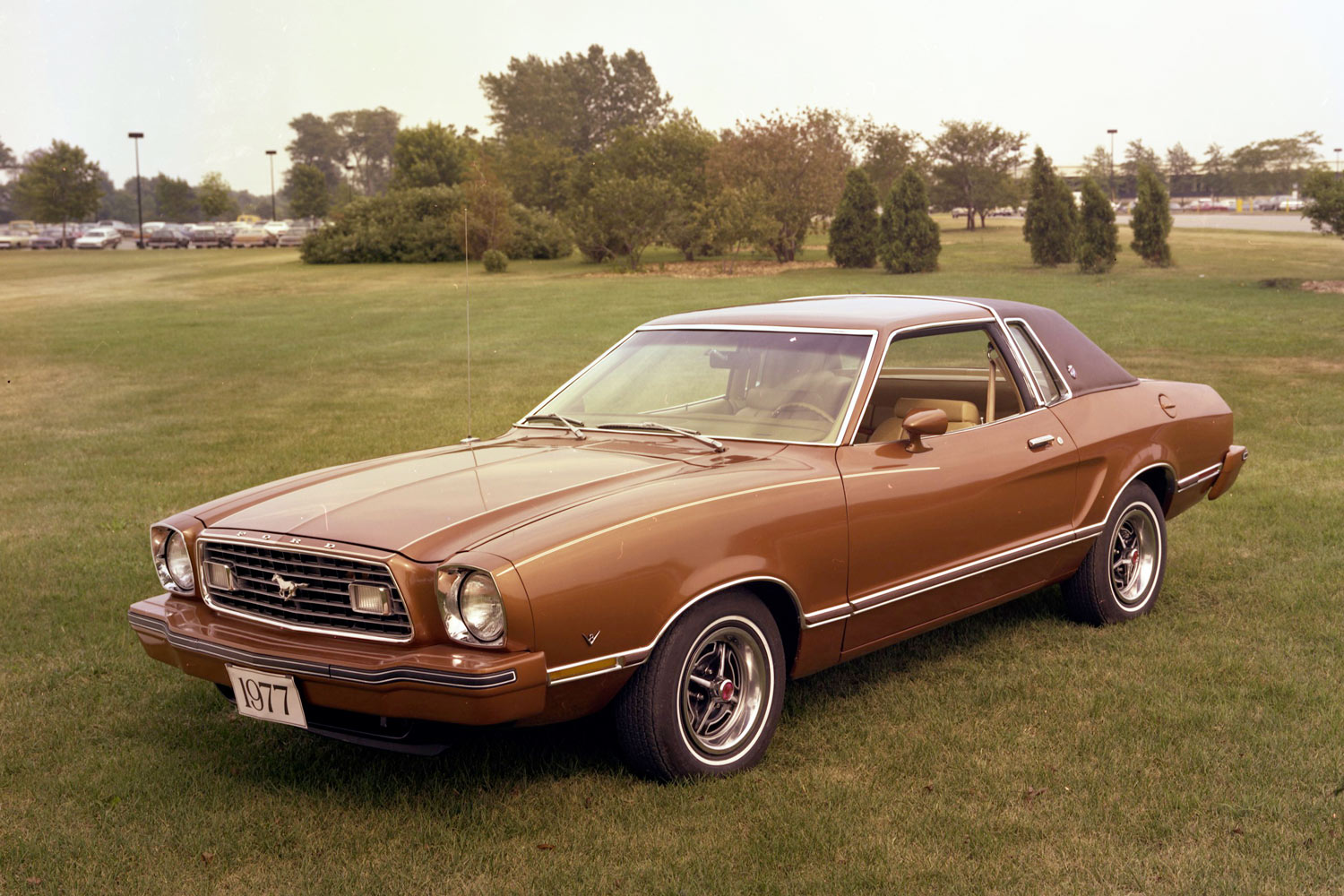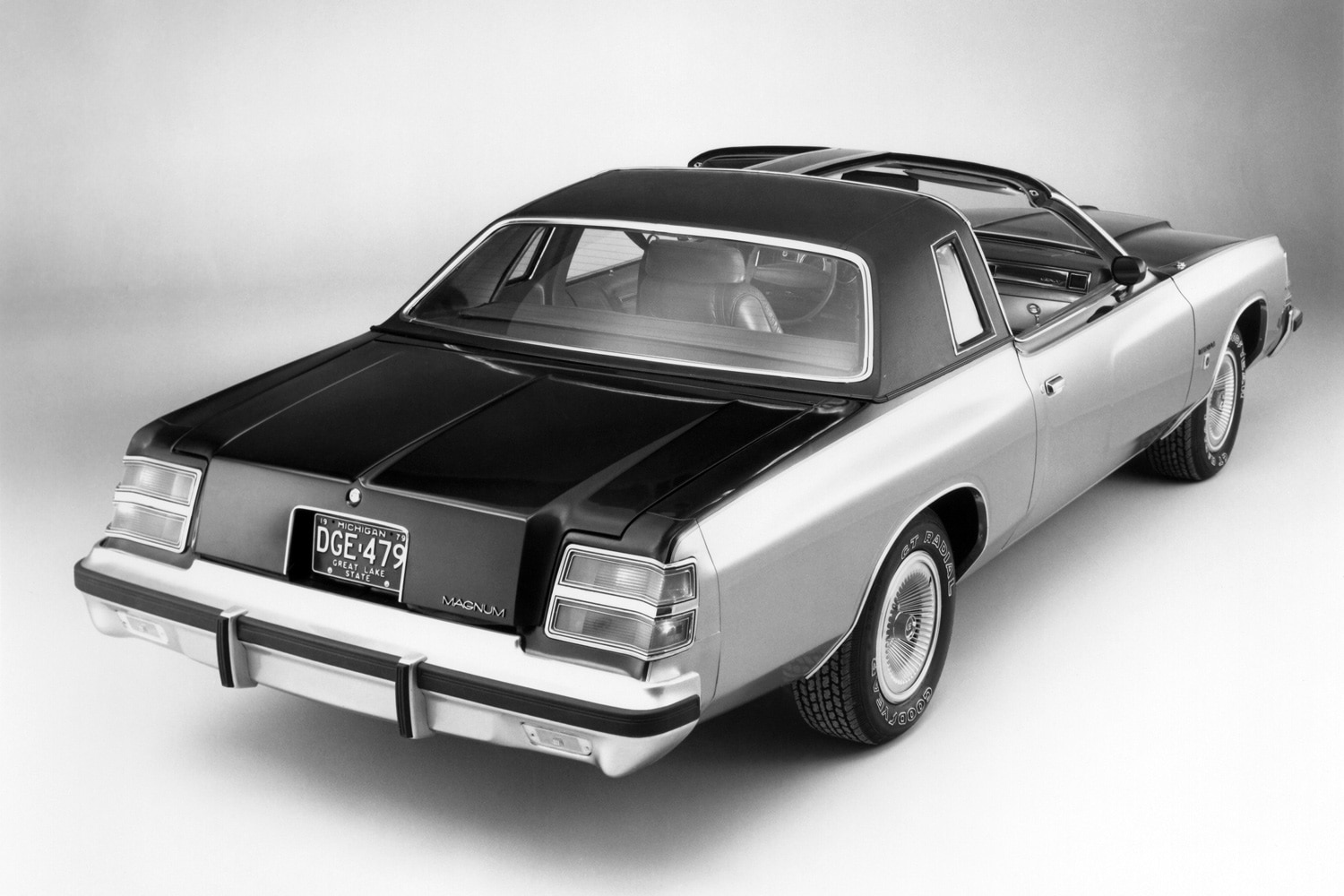5 Car Features From the 1970s We Want to See Again
Stickers and velour and T-tops, oh my!
 Ford
Ford
Some automotive styling fads deserve to be left in the rearview mirror, but since fashion is all about recycling, it's only a matter of time before what's gone around comes around — again. Which 1970s car features do we want to see make a comeback? Here are our top five retro design cues that deserve a second chance.
 Dodge
Dodge
T-tops for Cars
Automakers spent decades exploring ways to provide fun in the sun for drivers who didn't want to fully commit to a traditional convertible. After the sunroof became popular in the 1960s, attention turned to its cousin, the T-top. Cars with T-tops exploded in popularity in the mid-1970s as Buick, Pontiac, Dodge, and others embraced the feature.
Removable T-top panels provided open-air delight with better structural integrity than a convertible. They also let less adventurous passengers keep their side of the ride protected from UV rays and hair-mussing wind if they so choose. Modern construction techniques should easily solve the leak-and-creak issues that eventually pushed T-tops off the order sheet.
 Volvo
Volvo
Velour Interiors
The velour era of automotive interior design reigned supreme in the 1970s. Cushions that felt a mile deep floated like throw pillows on top of wide bench seats angled perfectly to accept the relaxed human form. Nearly every luxury car from Cadillac, Chrysler, and General Motors (and more than a few aspirational badges) went all-in on the ultra-soft fabric that adorned every touch point in a vehicle's cabin. One lavish example is the 1974 Volvo 264 TE, a stretched version of their popular smaller car, draped in the sumptuous material.
Leather has since taken over as the material of choice for status-seeking brands, but as artificial fabrics like Alcantara and Ultrasuede have proven, there's no reason we can't use modern science to imitate old-school upholstery.
 Ford
Ford
Wild Sticker Packages
Budgets were tight in the 1970s, which often meant automakers had to make something old look new again with a minimum financial investment. Enter the sticker package, slapped-on decals that revitalized tired sheetmetal and gave it a fresh lease on life. Particularly vibrant examples included the Ford Mustang II King Cobra, as well as the Pontiac Trans-Am. Why not add similar flavor to today's drab crossover crowd?
 Ford
Ford
Landau Roof
What's classier than a leather interior? How about turning things inside out and upholstering the roof instead? Intended as a callback to the carriage tops of the horse-and-buggy era, vinyl roof coverings followed roughly the same trajectory as velour in terms of colonizing the 1970s, with brands such as Ford, Lincoln, and Cadillac piling on the plush covering over previously bare roof metal. Popular enough to steam ahead into the 1980s, there are still aftermarket companies offering landau conversions today. Why not make them a factory option for the distinguished connoisseur?
 Ford
Ford
Porthole Windows
Low visibility is a common complaint about modern vehicles, especially SUVs. Although cameras and screens have stepped in to boost sightlines in the face of smaller side glass and shrinking back windows, a style icon from the 1970s is right there waiting to be tagged in.
Porthole windows carved into the rear roof pillars of large sedans and coupes — in addition to shag-carpeted custom vans — let a little extra light into the back seat. Installing them at both ends of modern trucks and sport-utility vehicles could give drivers a better chance of spotting pedestrians and traffic while changing lanes.
Written by humans.
Edited by humans.
 Benjamin Hunting
Benjamin HuntingBenjamin Hunting is a writer and podcast host who contributes to a number of newspapers, automotive magazines, and online publications. More than a decade into his career, he enjoys keeping the shiny side up during track days and always has one too many classic vehicle projects partially disassembled in his garage at any given time. Remember, if it's not leaking, it's probably empty.
Related articles
View more related articles